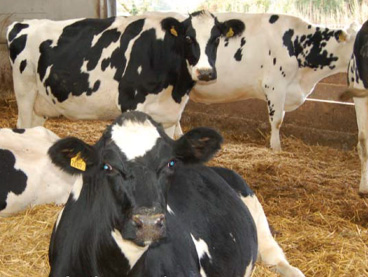Making full use of the individual cow fatty acid profiles on your milk records can help keep cows milking well when out at grass.
Use milk records to drive efficiency at grazing
Making full use of the individual cow fatty acid profiles on your milk records can help keep cows milking well when out at grass. Mike Chown from UFAC explains two easy things you can do.
At grass, dry matter intakes will vary from day to day. This will affect cow health, milk production and body condition changes, which will often not become apparent immediately.
The good news is that individual cow fatty acid information is now widely available at little or no cost if you milk record. The information can help you understand how your cows are performing and correct any problems quickly and cost-effectively.
Are cows losing condition?
It can take as long as a month before body condition loss becomes apparent, by which time reproductive performance will have been affected. Looking at the total mono-unsaturated fat and C18:1 Oleic Acid levels in the milk, can tell you quickly how your early lactation cows are managing.
For a normal healthy cow in early lactation, mono-unsaturated fats will be less than 30% and C18:1 will be less than 25% of total milk fat. If levels are higher than these it means your cows are energy deficient and are mobilising too much body fat and tissue to make up the energy shortfall. Left uncorrected this can lead to reduced milk yield, lower milk protein content and milk prices, along with poorer fertility.
If cows have high levels of these milk fatty acids, then you need to check dry matter intakes as this will be the single biggest cause of energy deficit in high yielding cows at grass. Quite simply they aren’t eating enough.
Measuring grass growth and allowing for grass DM variations is critical to understand how much dry matter from grazing the cows are actually consuming daily. If grass DMI levels are low then introduce or increase the buffer feed available.
Should I be feeding C16:0 fatty acid at grazing?
Butterfats at grass often decline and in an attempt to improve milk quality and milk price it may be tempting to add C16:0 fatty acid to the diet. This is a common question I am asked. In most cases the answer is no.
To understand what is happening in the cow, look at the C16:0 and short chain fatty acid levels in milk records. There is a biological maximum of C16:0 in cow’s milk of 40% of milk fat, so if C16:0 content is more than 32-35% there will be no economic response to adding any dietary C16:0. Furthermore C16:0 feed in isolation can have negative impact on body condition score and fertility, as it partitions nutrients to milk.
If you want to promote high butterfat content, and if C16:0 is low, it is more cost effective to increase the structural fibre in the diet. This can be achieved by adding more forage to the buffer feed or by adding high digestible fibre concentrates like sugar beet, soya hulls or palm kernel.
The way to check adequacy of rumen function is to look at the content of the short chain fatty acids, which are the fatty acids produced from rumen fermentation. If this level is less than 9% then the rumen is not working as effectively as it could and the diet needs to be assessed.
If we have good rumen function and the C16:0 content of butterfat is below 32% then look at adding a balanced fat like Omega Cream, which contains C16:0, C18:1, EPA & DHA fatty acids, this will optimise milk yield & fat, while keeping the cow healthy.
It C16:0 levels are above 35%, there is no point adding more C16:0 to the diet, you will be better advised to increase energy density of the ration by using a balanced fatty acid product such as Supa-Cream or Dynalac and look to drive dry matter intakes.


 Back to News
Back to News 



